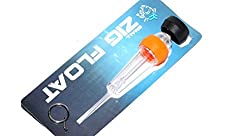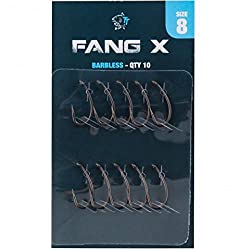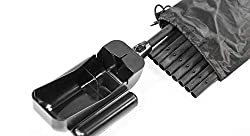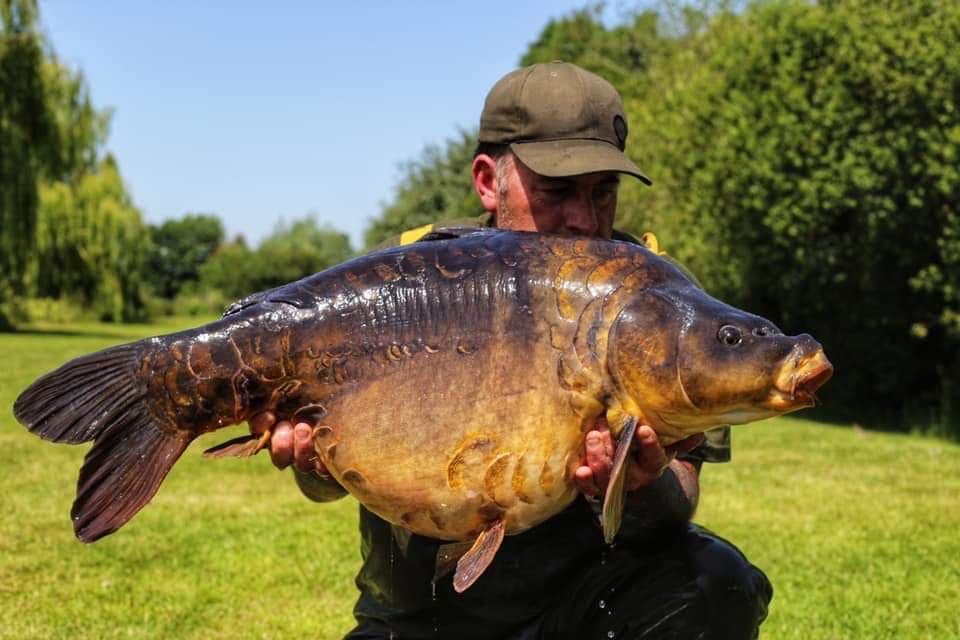Kingfisher Lake Details
What is the stock?
Kingfisher lake on the Bluebells complex is a very intriguing and mature 7 acre gravel pit holding a lot of big fish.
It’s hard to put an exact number on the actual stock but many believe there to be around 130 fish, including three 50lb fish {at the right time of year}.
A backup team of around 27 x 40lb fish and a further 70 at 30lb or so.
The remaining stock are mainly 20lb fish, mostly pristine commons mixed in with some stunning scaly mirrors.
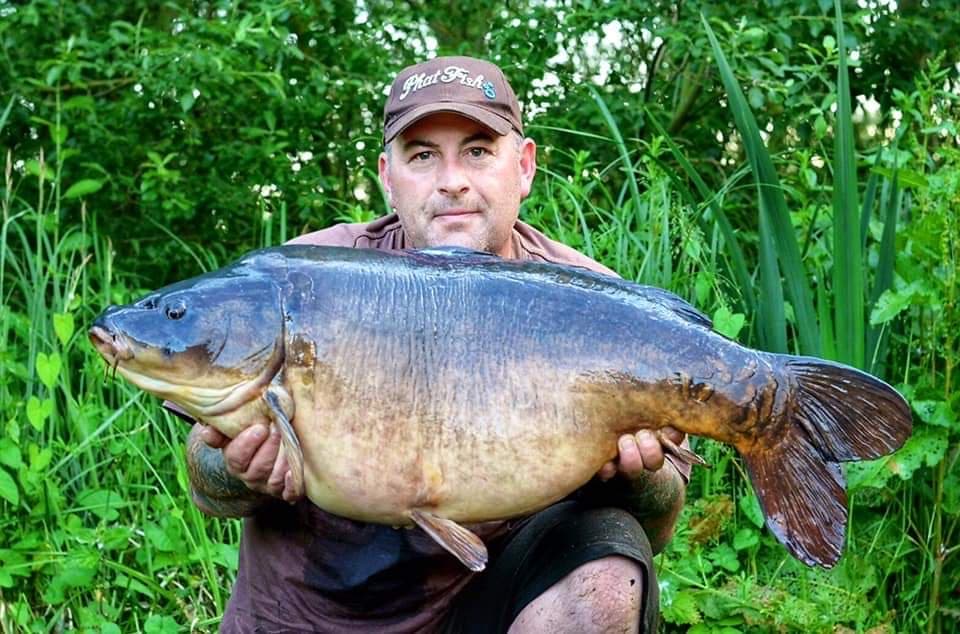
Tackle you will need on Kingfisher
What’s it like to fish?
Kingfisher is packed full of features including deep snaggy margins, gravel bars and plateaus with clay areas, weed beds and silt scattered all over the undulating lake.
It’s a very busy venue, as you would imagine being a day ticket and such a large stock of big fish, but it is worth waiting your turn in the prime pegs.
I started fishing at Kingfisher in 2000 and instantly fell in love with it, as it’s a beautiful lake with stunning fish and it can become really addictive.
A lot of the members refer to this as Kingy Fever!
It’s a venue that really gets your brain ticking and one you can’t sit on your laurels for long, because no two days are the same.
Tactics or baiting approaches that work one day may not on another, so there is a constant need to adapt on a daily basis.
Each swim has yard markers in to let you know how far out you’re allowed to fish, as you can imagine with such a busy lake, it’s good to have some clarity.
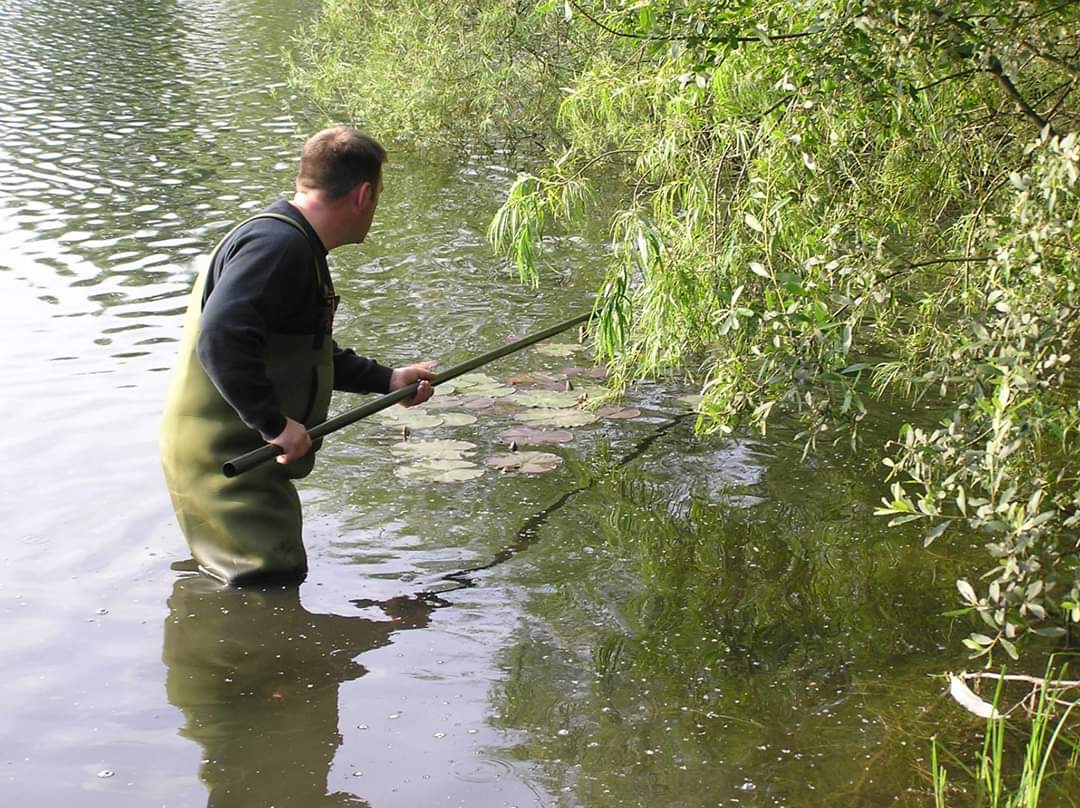
Best pegs on Kingfisher?
The Points Bank and The River Bank are the most popular swims by far because these offer the most water with a furthest cast of 75 yards.
The fish that reside there like to travel a lot and this is how they often combat the angling pressure.
They like to show a lot whilst doing this and they mainly follow the sun around the lake as they travel up in the water and then drop and graze on a few mouthfuls of bait from each angler as they are moving by.
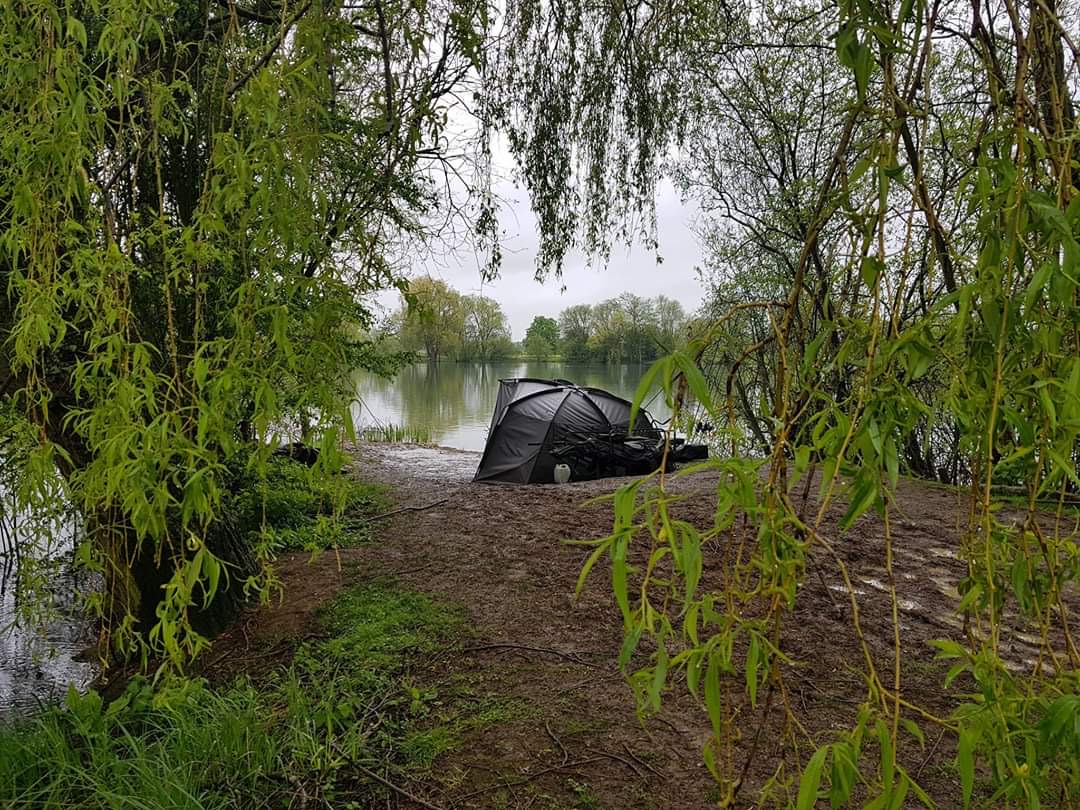
Best tactics
The Kingfisher stock are constantly on the move and doing laps of the lake.
By the time they’ve done a full circuit they’ve often eaten a lot of bait, but not lots off one baited spot, thus minimising the chances of getting caught.
It’s really important to have everything 100 percent at all times.
The spots they feed on are mainly the clay and gravel areas and are usually really clean. So if they’ve been fed on with any regularity you can usually pin point them quickly and get a bait out accurately on a confident feeding area.
I will usually cast out either a little sea lead or an unbaited rig to these spots, leaving them to settle for a while, then I’ll draw them back a short distance and reel in to check for any type of debris.
If I pick up anything at all, I scrap that spot and start again until I find the cleanest spot I can.
I never recast from 1st light till 12 o’clock noon as this is prime time for a bite on Kingfisher and will definitely ruin your chances of a run.
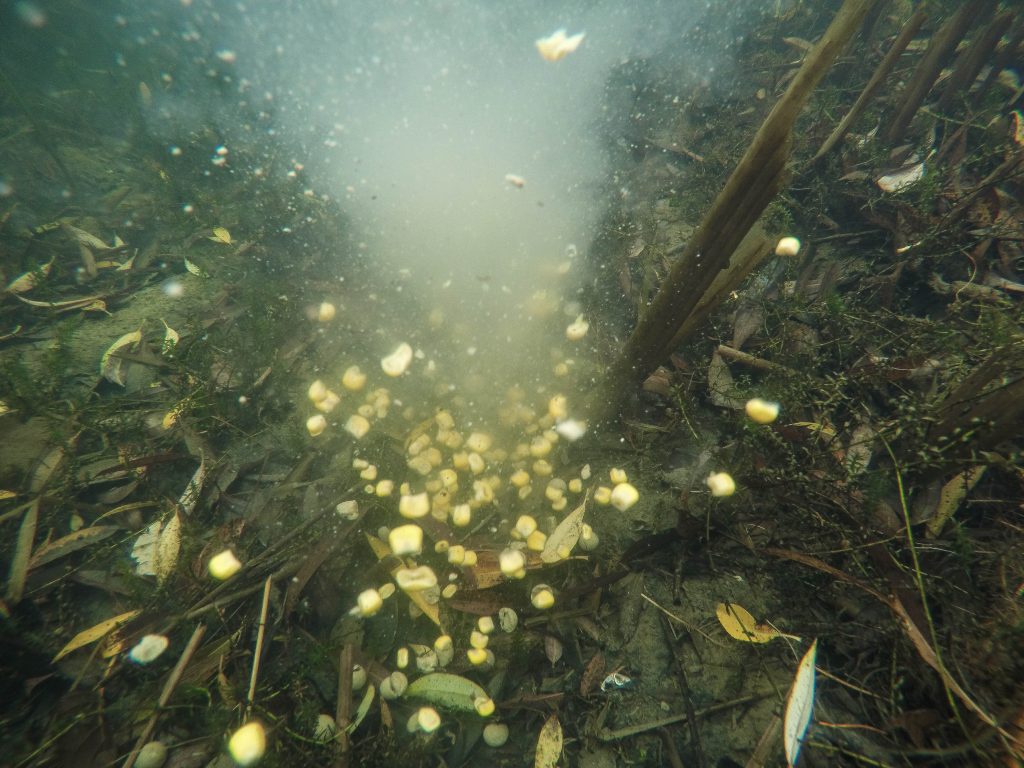
What bait should I use?
Bait wise they will eat anything on any given day but they do love boilie, hemp, corn and pellet.
That said, early in the season, I tend to stick to zigs and single pop-ups on the bottom, yellow is my favourite colour on there and it accounts for a lot of fish.
It seems silly to say, but a simple bottom bait straight out of the bag can be a massive edge on there. Simply because most anglers prefer to use pop-ups on rigs that are in vogue such as a ronnie rig!
I had my best ever year doing this and keeping it as simple as possible.
They love a floater on Kingfisher, but are very cute and feed more confidently when there is no wind so they can examine each bait easier.
Zigs can be devastating, especially in Springtime, they do travel a lot high up in the water so it’s a great way to intercept them.
For bottom fishing, they love a low air pressure, anything below 1000mb and they feed more in the silty areas of the lake. Although it generally doesn’t fish well in the rain, when it’s overcast and windy you can be confident of a bite.

How busy is it?
The complex is both day ticket and membership. Membership is £1200 per year starting from when you purchase it but as you would expect, there is a long waiting list for this.
Obviously, with the impressive stock of fish in Kingfisher, it can get very busy at times but changeover days when many leave and offer opportunities to newcomers are Wednesday and Sundays.
If you’re the type of angler that seeks solitude, this is not the venue for you, but if you’re the type that’s up for a challenge the rewards are there.
Lee Birch
One of the best anglers in the UK, Lee Birch is widely recognised for his exceptional surface and zig angling skills.
